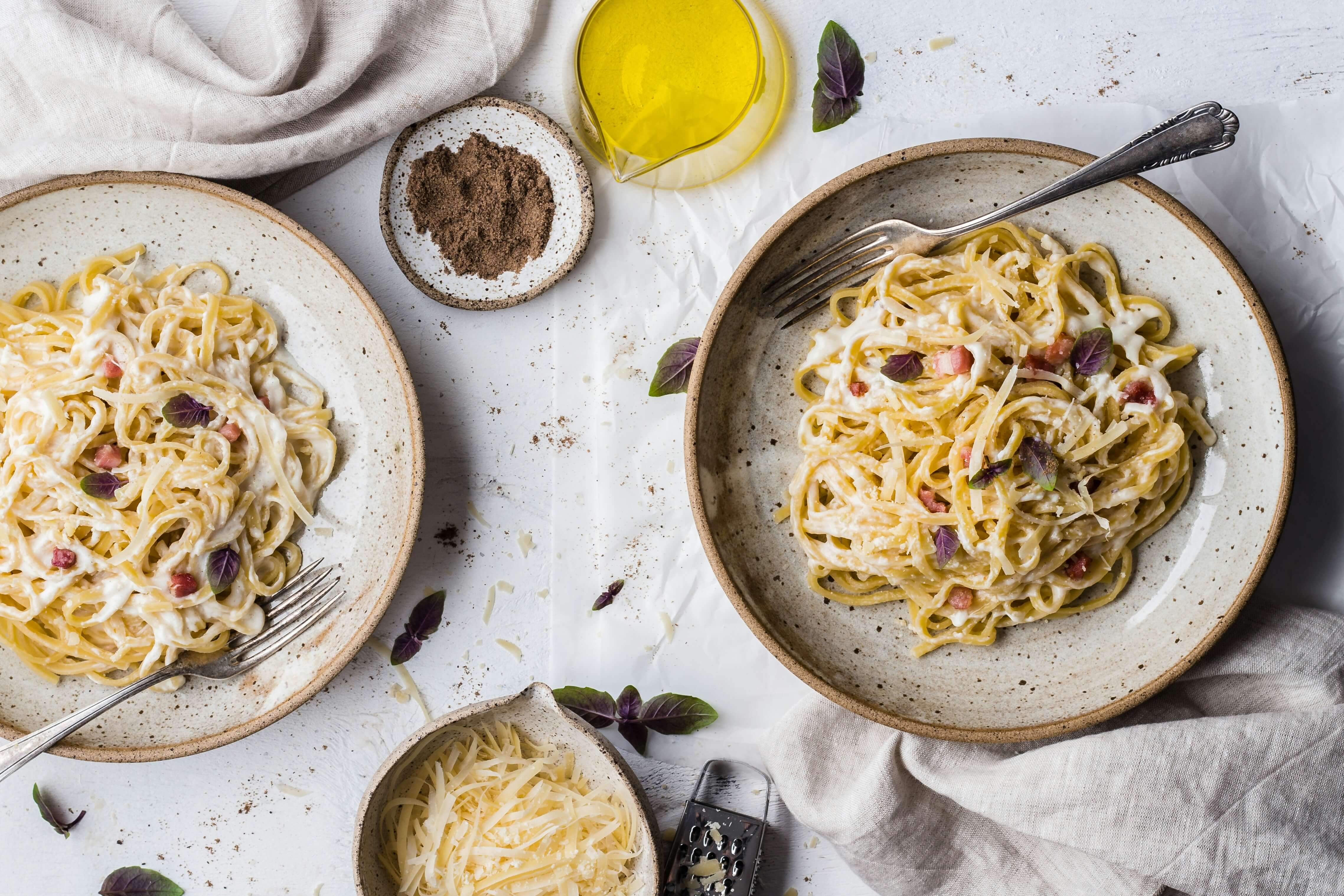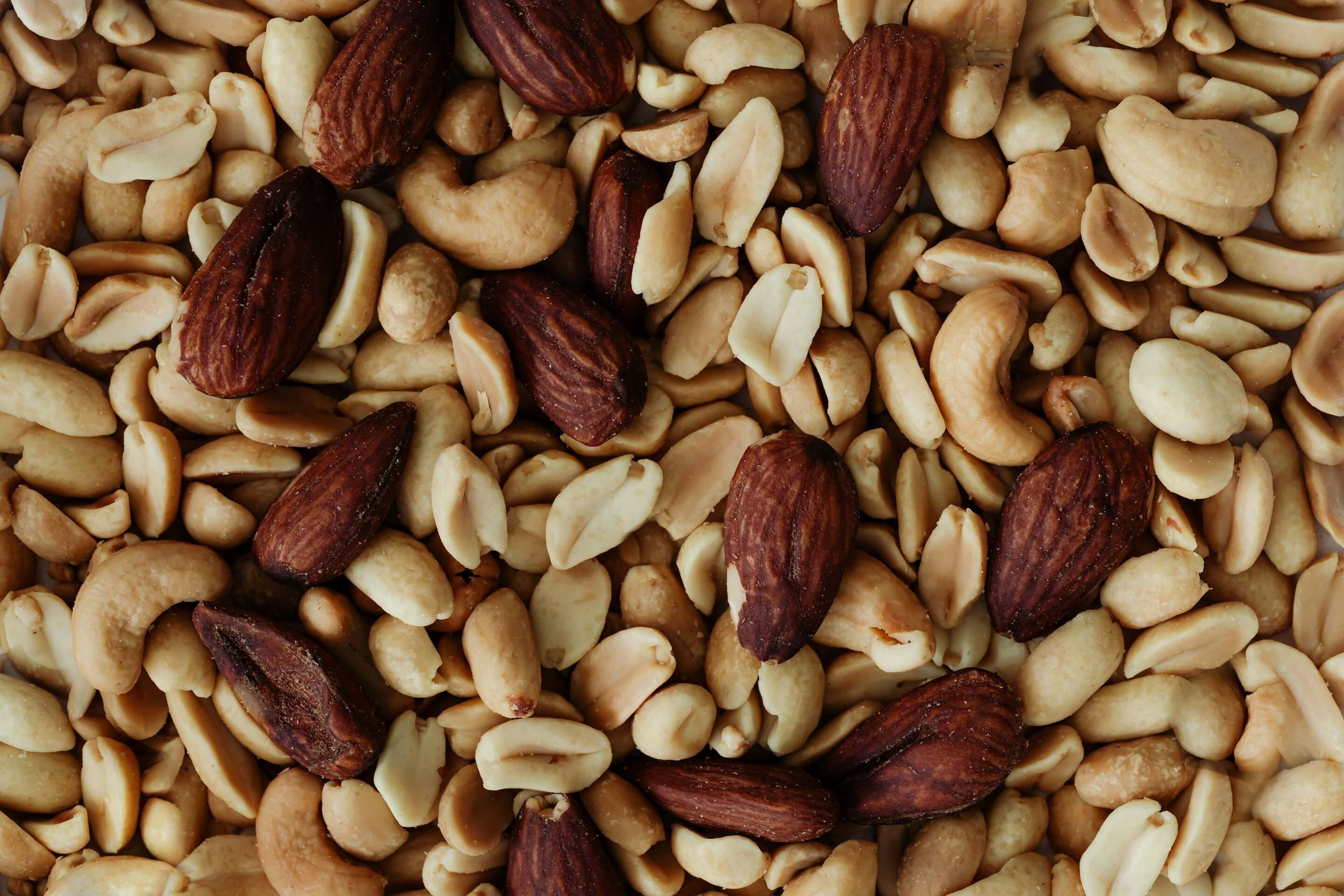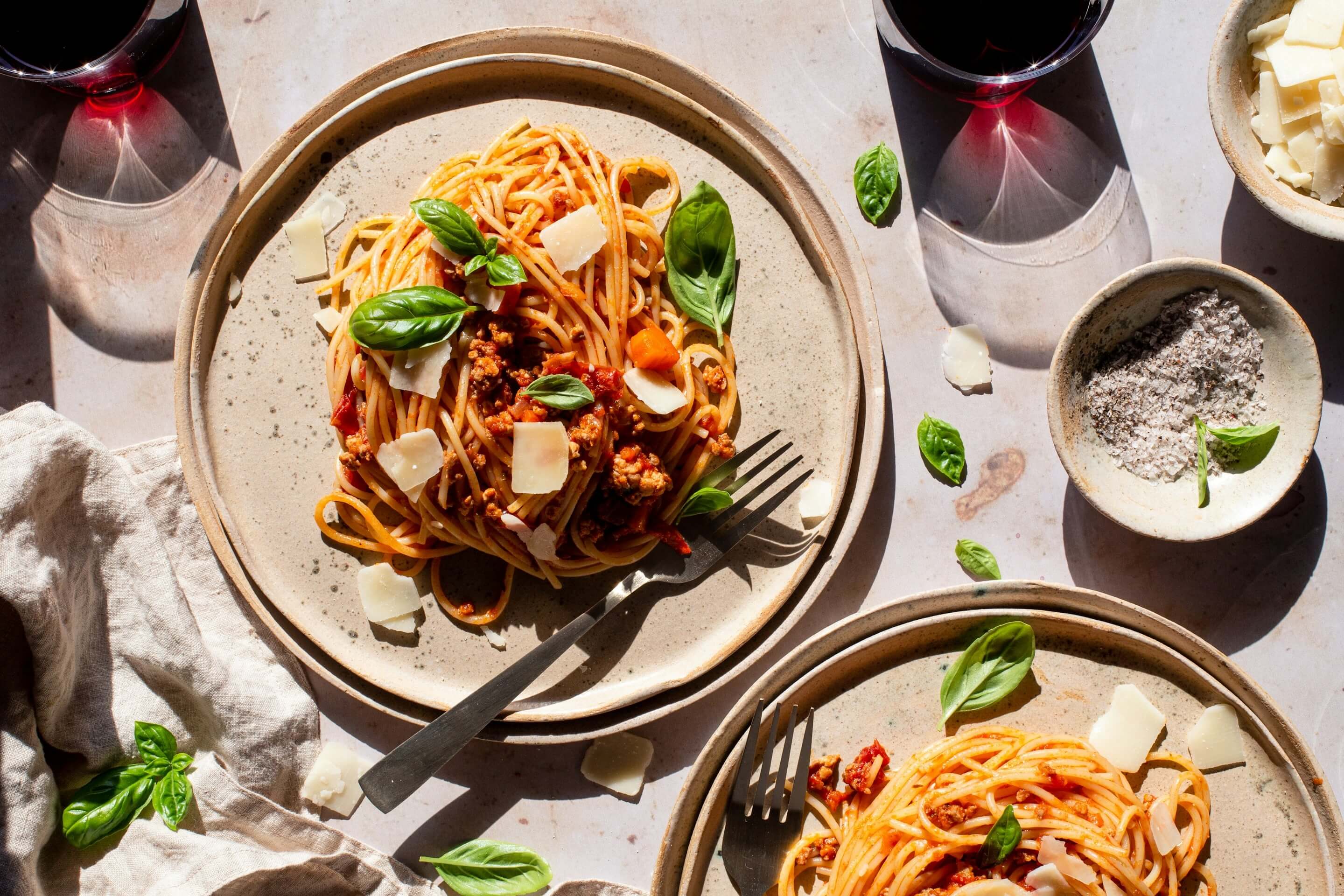Nutrition
Jan 5, 2024
Healthy nutrition for endurance sports: your nutrition plan
Not only regular training, but also a healthy nutrition plan is important for endurance and strong performance. However, the answer to the question of what to eat as an endurance athlete is often not so simple. In addition to the quantity and quality of nutrients, the right timing of meals and snacks is also crucial for your performance. The fact is, nutrition plays a fundamental role, not only for your health, but also influences your training and results in endurance sports.
Healthy and fit with endurance sports and the right diet: What should endurance athletes eat?
A balanced training routine involves much more than regular training sessions. To achieve the best results in endurance sports, sufficient sleep and recovery as well as a healthy and balanced diet are just as important as the training itself.
Our diet provides our body with the vital energy it needs to function properly. If this energy is lacking, or if we don't get enough nutrients, we feel tired and fail to perform at our best. But what does our body need to be fit and healthy?
Jogging and nutrition - what does the body need?
If you regularly take part in endurance sports such as jogging, cycling, triathlons or similar, you need to provide your body with important nutrients for energy production. Depending on how long and intense the training session or competition is, our body draws on its carbohydrate and/or fat stores to generate energy. [1]
Proteins are needed to build and regenerate our cells. They therefore not only contribute to the maintenance of joints, tendons and muscles, but also ensure an intact immune system and many other vital processes in our body. [2]
Macronutrients and their metabolism: what role do carbohydrates, proteins and fats play in endurance sports?
Macronutrients are one of the most important categories when it comes to a balanced diet for endurance sports. They are the 3 main components of our diet and provide our body with the energy it needs to survive. These include carbohydrates, fats and proteins. [3]
Carbohydrates for intensive sporting activities
They provide us with 4.1 kcal (calories) per gram[4] and are stored as glycogen in the liver and in our muscles.[5] They are then burned with oxygen during glycolysis and provide us with important energy during sport.[6] Carbohydrates can also be converted into energy without oxygen, i.e. with the help of anaerobic energy production. [7]
Carbohydrate energy is available to our body particularly quickly during intense physical exertion, which is why it is used first during endurance sports. However, the carbohydrate stores in our muscles and liver are limited and must be constantly replenished. They only provide us with energy for around 60-90 minutes.[8]
The right diet can increase carbohydrate stores.[9] When interval training or preparing for competitions, some athletes therefore like to switch to a high carb diet with a carbohydrate content of up to 80% (carboloading). With this increased intake of carbohydrates, they increase their carbohydrate stores and train their carbohydrate metabolism. [10]

Fats: energy suppliers for less intensive training sessions
Fats provide us with 9.3 kcal, i.e. more than twice the amount of energy as carbohydrates. However, energy production is fundamentally different. In contrast to carbohydrates, oxygen is always required to burn fat, so only aerobic energy production is possible. [11]
Your body only gains energy from fat during less intensive training sessions in the aerobic zone, where there is enough oxygen to burn fat. This includes slow endurance runs, for example. [12]
Energy production from fat also takes place much more slowly than from carbohydrates. Even if fat reserves are accessed at the start of the training session, this still happens to a very small extent. Optimal fat burning only occurs after the "run-in", i.e. 20-30 minutes after the start of training.[13]
However, our body is much better at storing fat than carbohydrates. Although our fat reserves are mobilized slowly, they can provide us with energy for much longer than our carbohydrate stores. In theory, the fat reserves of a healthy person would be sufficient for more than 10 marathon distances, but you would have to run very slowly and at a leisurely pace. [14]
Regular training also trains your metabolism. Your body becomes better at using its fat reserves, which means that the limited carbohydrate stores in your liver and muscles can be spared. [15]

Proteins for the regeneration and development of muscles
The last category of macronutrients is less responsible for energy production. Proteins are much more the basic building blocks of our cells and therefore essential for a healthy and strong body. They play an important role in our immune system, in the regeneration of our body and in the development of our muscles and tendons. As these are put under increased strain during endurance sports, it is important to regularly supply the body with sufficient protein.[16]
Protein is only used to generate energy in exceptional cases. This happens during long training sessions with high exertion, when fat cannot be burned and carbohydrate stores are depleted.[17]

The right amount makes all the difference: how many carbohydrates, fats and proteins should athletes consume?
As carbohydrates are metabolized first and foremost during endurance sports, it stands to reason that they play an important role in nutritional habits. The recommendations differ from Expert to Expert, but a rough breakdown of macronutrient intake is given:
55-60 % carbohydrates,
25-30 % fat
and 12-15 % proteins are recommended. [18]
The micronutrients and their functions
While macronutrients provide us with vital energy, micronutrients ensure that the necessary metabolic processes run smoothly.[19] They also ensure that the functions and structures in our body are maintained. They are only found in small quantities in food and are divided into the following categories:
Vitamins: Multi-talents for the metabolism, the immune system and the formation of blood cells
In addition to metabolizing macronutrients, these organic substances are responsible for building enzymes and blood cells and protecting our immune system. There are fat-soluble vitamins (A, D, E, K) and water-soluble vitamins (C, B-complex). Depending on the type, vitamins are found in wholegrain products, meat, fish and eggs and, above all, in fresh fruit and vegetables.[20]
Electrolytes: mineral salts for bones, blood and a balanced fluid balance
These inorganic substances are either already in our body or must be taken in through food, as our body cannot produce them itself. A distinction is made between bulk elements (magnesium, calcium, sodium) and trace elements (zinc, iodine, iron). The former trigger muscle contractions by conducting electrical impulses via the nerve pathways. They also play an important role in bone formation, blood clotting and fluid balance. Trace elements are important for mental and physical development, enzyme reactions and the immune system.[21] Foods such as soya, nuts, spinach, cheese, mushrooms, fish and meat are particularly rich in minerals. [22]
Secondary plant substances: Helping hands from head to toe
Secondary plant substances also have an effect on the various metabolic processes. They also dilate the blood vessels and thus help to lower blood pressure. They are also important for neurological functions and have an antibacterial and anti-inflammatory effect. Some sources even claim that they may protect against various types of cancer.[23]
Digression: Food supplements: in case there is a nutrient deficiency after all
Food supplements can provide the body with additional vitamins and mineral salts. A balanced and varied diet with plenty of fruit and vegetables generally provides sufficient micronutrients. However, supplements may be necessary for certain diets, such as vegetarian or vegan diets, or for pregnant women and people with allergies and intolerances.[24] In extreme sporting situations, additional mineral salts in particular help to avoid deficiencies.
Before, during and after training: the right nutrition plan for endurance athletes
In addition to the sufficient amount of nutrients, the timing of meals and snacks is also important in order to supply your body as effectively as possible. The availability of nutrients in our body influences what is metabolized and what form of energy production takes place. The regeneration phase is also supported by our diet. It is therefore important to eat the right food at the right time. In addition to 3 main meals, healthy snacks should also be on the menu.[25]
Before training: the right foundation for the workout or competition
The last big meal should be about 2-3 hours before the training session and should be low in fat. Fat remains heavy in the stomach for a long time and can hinder the training session. Instead, carbohydrates are particularly important before training. They ensure that the carbohydrate stores in the muscles and liver are full and that energy can be obtained quickly during exercise.[26] A moderate amount of protein is also part of a pre-workout meal.
A healthy, carbohydrate-rich breakfast includes muesli, porridge or overnight oats. Oatmeal is rich in complex carbohydrates and can be combined with milk, yogurt or vegan alternatives such as soy drink. When refined with fresh fruit, breakfast is particularly healthy.
If you like to exercise in the afternoon, the same guidelines apply to your lunch. A portion of fish or low-fat meat such as chicken or turkey with wholegrain rice, quinoa or pasta will provide you with complex carbohydrates and protein. A fresh salad or vegetables provide important fiber and vitamins. [27]
If it's been a while since your last meal and you get hungry again before training, you can treat yourself to a snack up to an hour before exercise. Instead of sweets, however, we recommend high-quality snacks such as a light slice of wholemeal bread.[28] A wholemeal tortilla filled with fresh berries and nut butter or banana and quark is also a creative and tasty solution.[29] Fruit such as bananas, apples and oranges provide you with quickly available carbohydrates before training.
Also make sure you drink plenty of fluids before exercise to keep your body hydrated. About 4 hours before a training session or competition, you should consume approx. 5-7 ml of fluid per kilogram of body weight.[30]
During training: For thirst and hunger in between
There is a lot to consider when it comes to nutrition plans and endurance, and not just before sport. It is also important to provide the body with sufficient fluids during training or competitions. Depending on your exertion and sweat rate, you should drink around 0.4-0.8 liters of fluid per hour.[31] Electrolyte drinks also help you to replace minerals such as sodium, potassium and magnesium that are lost through sweat.
However, during particularly demanding and long training sessions or competitions, pure hydration is not enough. The carbohydrate stores in the muscles and liver only last up to 60 or max. 90 minutes, after which they are exhausted. From this point onwards, the body must be supplied with additional carbohydrates. This prevents a drop in performance ("hunger pangs").[32]
Around 0.7 grams of carbohydrates per hour and per kilogram of body weight are sufficient to maintain performance. These can be taken as drinks with glucose or dextrose, in the form of sucrose or maltodextrin or through bananas, dried fruit or fruit bars.[33] Special carbohydrate-rich sports gels also offer a good solution, as they can be quickly absorbed by the body.
After training: replenish your reserves
First of all, it is particularly important to replenish your water balance after training or a competition. For every kilogram of body weight that you have lost in fluid, you should replace it with around 1.5 liters. Also make sure you restore your electrolyte balance with sufficient minerals. [34]
The nutrition plan for endurance athletes after training includes carbohydrates again and this time also more proteins. This allows depleted carbohydrate stores to be replenished and promotes the body's regeneration. Proteins are particularly important after exercise, as they are crucial for cell regeneration and muscle building. [35]
Wholemeal bread with ham and cream cheese and fresh vegetables could be served for dinner.[36] Lean meat or fish with rice, wholemeal pasta or quinoa as a side dish also provide important nutrients. Quinoa is also ideal for vegetarians and vegans, as the pseudo-grain not only provides complex carbohydrates, but is also rich in protein. A stew with lentils or chickpeas and vegetables also offers a carbohydrate- and protein-rich vegan alternative. [37]
If it's not yet time for dinner after your training session, you still don't have to and shouldn't go hungry. Your body can absorb and process the nutrients supplied to it particularly well within an hour of exercising. You should treat yourself to a carbohydrate- and protein-rich snack within this time frame (but no later than 2 hours after exercise).[38]
Incidentally, fiber and healthy fats should also be part of your diet after training. Polyunsaturated fatty acids such as omega 6 and omega 3 are particularly important. Omega-6 fatty acids are found in vegetable oils such as safflower oil, pumpkin seed oil or olive oil, but also in beef. Omega-3 fatty acids are mainly found in fatty fish such as salmon or mackerel, in linseed, chia seeds and rapeseed oil.[39]
Antioxidants such as beta-carotene, vitamin C and E are also important after sport. They help to reduce the damage caused by oxidative stress caused by competitions or intensive training. Vegetables, fruit and berries in particular are rich in antioxidants.
A balanced diet for better performance in endurance sports
A healthy diet should provide sufficient macro and micronutrients and, above all, be varied. The more varied your diet, the more likely you are to get all the proteins, healthy fats, minerals and vitamins your body needs to stay healthy and fit.
And if your diet is right, your performance will also improve significantly. Your muscles will be able to recover better, your metabolism will function smoothly, your immune system will remain intact and you will have enough energy to perform at your best. Even if it is difficult to get rid of bad eating habits and build up new positive ones, the change will pay off, because a balanced diet is one of the cornerstones of successful endurance training.
Tim Fabiszewski
Author
Sources
See Sportland Niederösterreich: The optimal diet for endurance athletes. https://www.sportlandnoe.at/die-optimale-ernaehrung-fuer-ausdauersportler.
See Schorsch: Nutrition for endurance athletes - 5 great tips for you. Mission Triathlon: https://mission-triathlon.de/ernaehrung-fuer-ausdauersportler/.
See Schorsch: Triathlon nutrition - the basics for your training. Mission-Triathlon: https://mission-triathlon.de/ernaehrung-fuer-sportler/.
See Schorsch: The triathlon nutrition.
See Nutrition and endurance sports. Gesundheit.gv.at: https://www.gesundheit.gv.at/leben/bewegung/sport-ernaehrung/ausdauersport-ernaehrung.html.
Cf. How endurance athletes eat optimally! Foodspring: https://www.foodspring.at/magazine/so-ernahren-sich-ausdauersportler-optimal.
See Schorsch: Nutrition for endurance athletes.
See Schorsch: Nutrition for endurance athletes and Foodspring.
See The optimal diet for endurance athletes. Nutrition in endurance sports - all information for amateur athletes. Sportland Niederösterreich: https://www.sportlandnoe.at/die-optimale-ernaehrung-fuer-ausdauersportler.
See Schorsch: Ernährung für Ausdauersportler.
See Schorsch: Ernährung für Ausdauersportler.
See Gesundheit.gv.at.
See Fettverbrennung & Sport: Ab wann verbrennt der Körper Fett? (2022) BiotTech USA: https://biotechusa.de/fettverbrennung-sport-ab-wann-verbrennt-der-koerper-fett/
See Schorsch: Ernährung für Ausdauersportler.
See Gesundheit.gv.at.
See Schorsch. Ernährung für Ausdauersportler and Ernährung für Ausdauersportler: 5 Prinzipien, auf die's ankommt (2021). Pushing Limits: https://pushing-limits.de/blog/wheresthefood-blog/ausdauersportler-ernaehrung-basics-tipps/.
Cf. Gesundheit.gv.at.
Cf. Sportland Niederösterreich.
Cf. Sportland Niederösterreich.
Cf. Schorsch: Die Triathlon-Ernährung.
Cf. Schorsch: Triathlon nutrition.
Cf. minerals, the body's silent helpers - with numerous tasks. Edeka: https://www.edeka.de/ernaehrung/bewusste-ernaehrung/vitalstoffe/mineralstoffe/index.jsp.
See Secondary plant substances and their effect on health. German Society for Nutrition e.V.: https://www.dge.de/wissenschaft/weitere-publikationen/fachinformationen/sekundaere-pflanzenstoffe-und-ihre-wirkung/.
Cf. Schorsch: The triathlon diet.
Cf. Pia (2022): Proper nutrition before and after training: when do I eat what? Pushing Limits: https://pushing-limits.de/ernaehrung/ernaehrung-training-wann-esse-ich-was/.
See Pia (2022) and Rewe: Endurance sports nutrition plan. https://www.rewe.de/ernaehrung/ernaehrungsplan/ausdauersport/.
See Body Attack: Endurance sports nutrition plan. https://www.body-attack.de/ratgeber-ernaehrungsplan-ausdauer.html.
See Rewe.
See Lena (2022): Sports nutrition: 5 questions and answers about snacks for athletes. Pushing Limits: https://pushing-limits.de/blog/pushinglimits-blog/sporternaehrung-5-fragen-zu-snacks-fuer-sportler/.
Cf. American College of Sports Medicine. (2021): Selecting and Effectively Using Hydration for Fitness. Medicine & Science in Sports & Exercise, 53(11), 2208-2227.
Cf. American College of Sports Medicine. (2021).
Cf. Gesundheit.gv.at.
Cf. Gesundheit.gv.at.
Cf. American College of Sports Medicine. (2021).
Cf. Pia (2022).
Cf. Body Attack.
Cf. Rewe.
Cf. Pia (2022).
Cf. Özdemir, Erdim (2022): Omega-3 and omega-6 fatty acids - the healthy fats. Cerascreen: https://www.cerascreen.at/blogs/gesundheitsportal/omega-3-und-omega-6-fettsauren.








